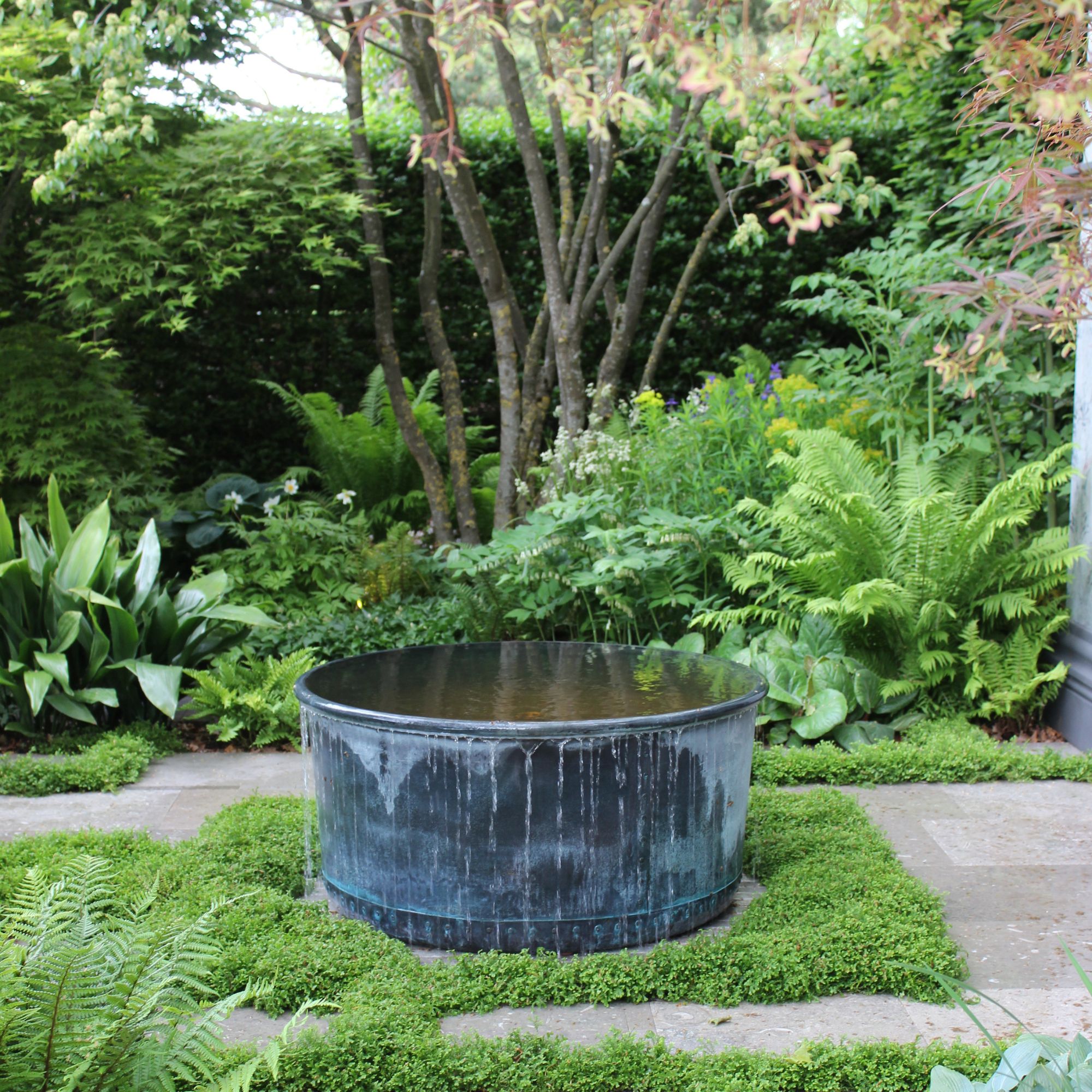
Healing gardens aren't a new concept, but they're worth rediscovering as the evidence is stacking up for just how beneficial outdoor space is for us. The number of searches for calming garden ideas and how to soundproof a garden are proof enough that we’re all just looking to carve out our own little outdoor oasis.
Being in nature comes with several mental health benefits. According to Mind, bringing nature into your everyday life can improve your mood, reduce feelings of stress or anger, help you feel more relaxed, improve your confidence, and reduce loneliness.
Visiting public green spaces is wonderful - and these parks are important lifelines for those without their own outdoor space – but having your own garden is going to help you engage with nature more regularly.
And what's more the mental health benefits can be made stronger with a garden designed specifically around the concept of ‘healing’. But just what is a ‘healing’ garden, and how can you go about creating your own?
What is a healing garden?
'A healing garden is a space that should make people feel better,' explains garden designer Harriet Worsley of Worsley Design & Consultancy. 'They don’t have to be ill or suffering. It can just be a calm, uplifting green space that should help to change the mood of those who interact with it, in a positive way.'
Healing gardens are nothing new. The idea can be traced back to the zen gardens that have existed in Japanese culture for over 1000 years, or cloister gardens found in many medieval monasteries, and used by monks as spaces for quiet contemplation.
What are the important features of a healing garden?
Trees
Ever heard of forest bathing? The term emerged in Japan in the 1980s as a physiological and psychological exercise called shinrin-yoku, and has recently been co-opted by millennial wellness chasers in the West.
The science behind some of the thinking is that trees release phytoncides – antimicrobial compounds that when breathed in can increase the production of white blood cells called natural killer (NK) cells which kill tumor- and virus-infected cells in our bodies.
A 2010 study found the NK activity from a 3-day, 2-night forest bathing trip lasted for more than 30 days.
According to interior designer Paula Robinsion, author of The Healing Home and Garden (Yellow Kite), it’s this reason that makes trees a must in any healing garden, even if they're only trees for a small garden. Paula recommends 'evergreens like cedar, pine, spruce and conifer' in particular as these, 'produce the most phytoncides'.
Ponds
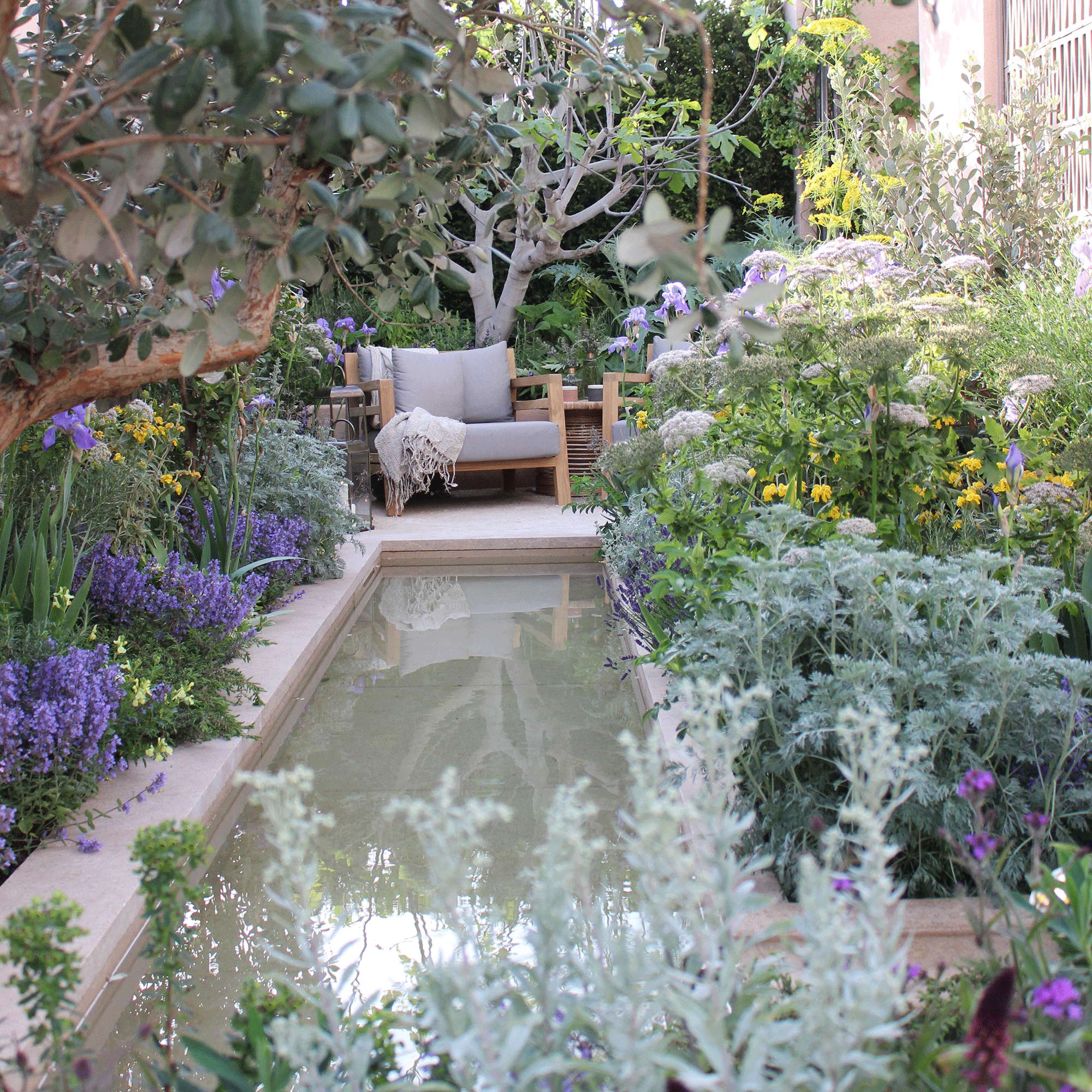
After green space, a healing garden will also look to incorporate elements of blue space through a garden water feature idea.
'Consider installing a pond no matter how small,' says Paula. 'Proximity to blue space is very beneficial to our health, and helps to support wildlife by providing an essential clean water source.'
The science behind this feature is strong – a meta-review of 20 studies investigating population-level relationships between blue spaces and human health, found that the more time people spend near water, the better they feel.
Spaces for wildlife
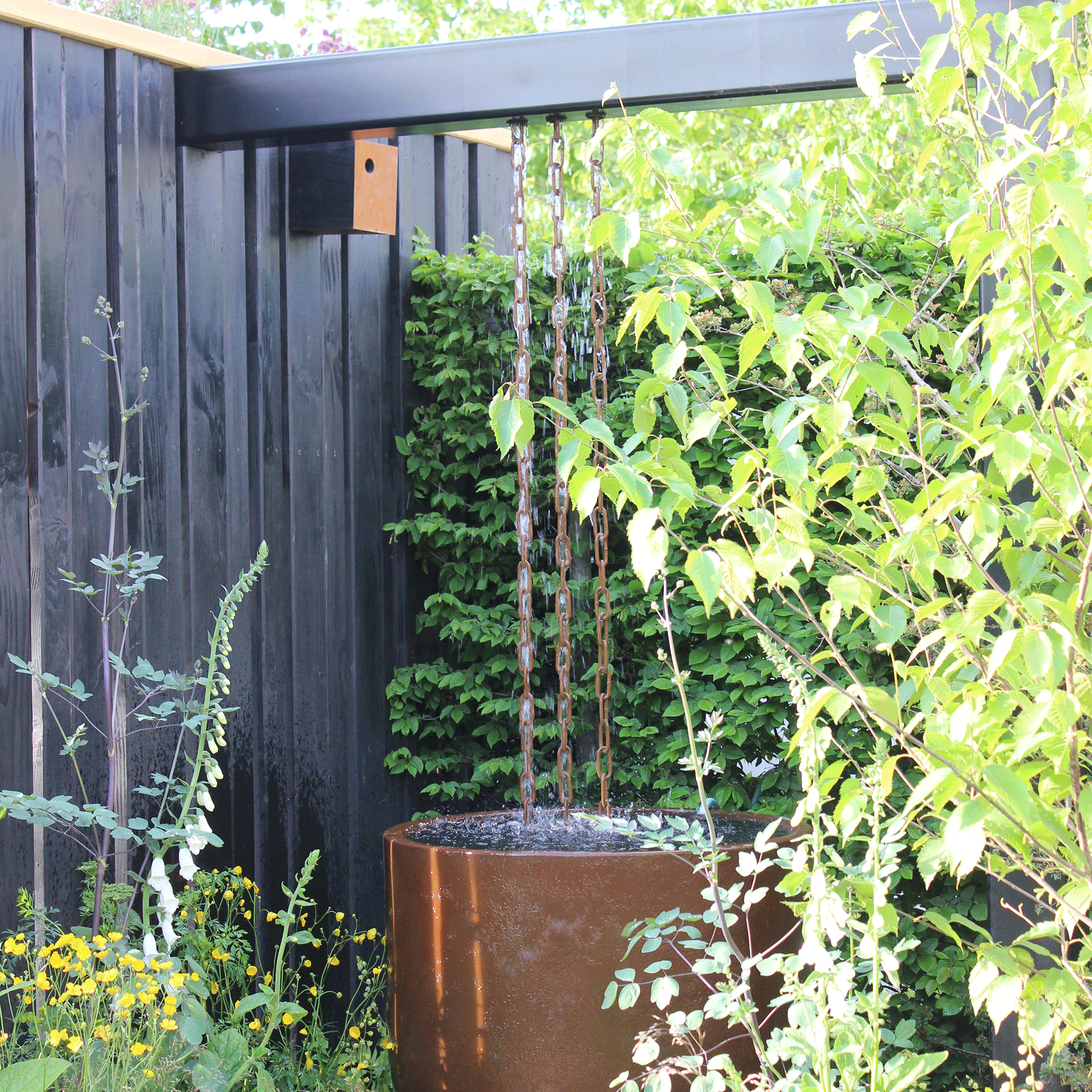
The next two features of a healing garden are focused on protecting the natural habitat and not upsetting the balance nature has created.
'When we develop a relationship with our land and the creatures sharing it, we heal ourselves,' explains Paula. 'Include at least one bird feeder. Watching and listening to birds helps us to slow down and hones our watchful stillness skills which lead to improved health.'
Native grasses
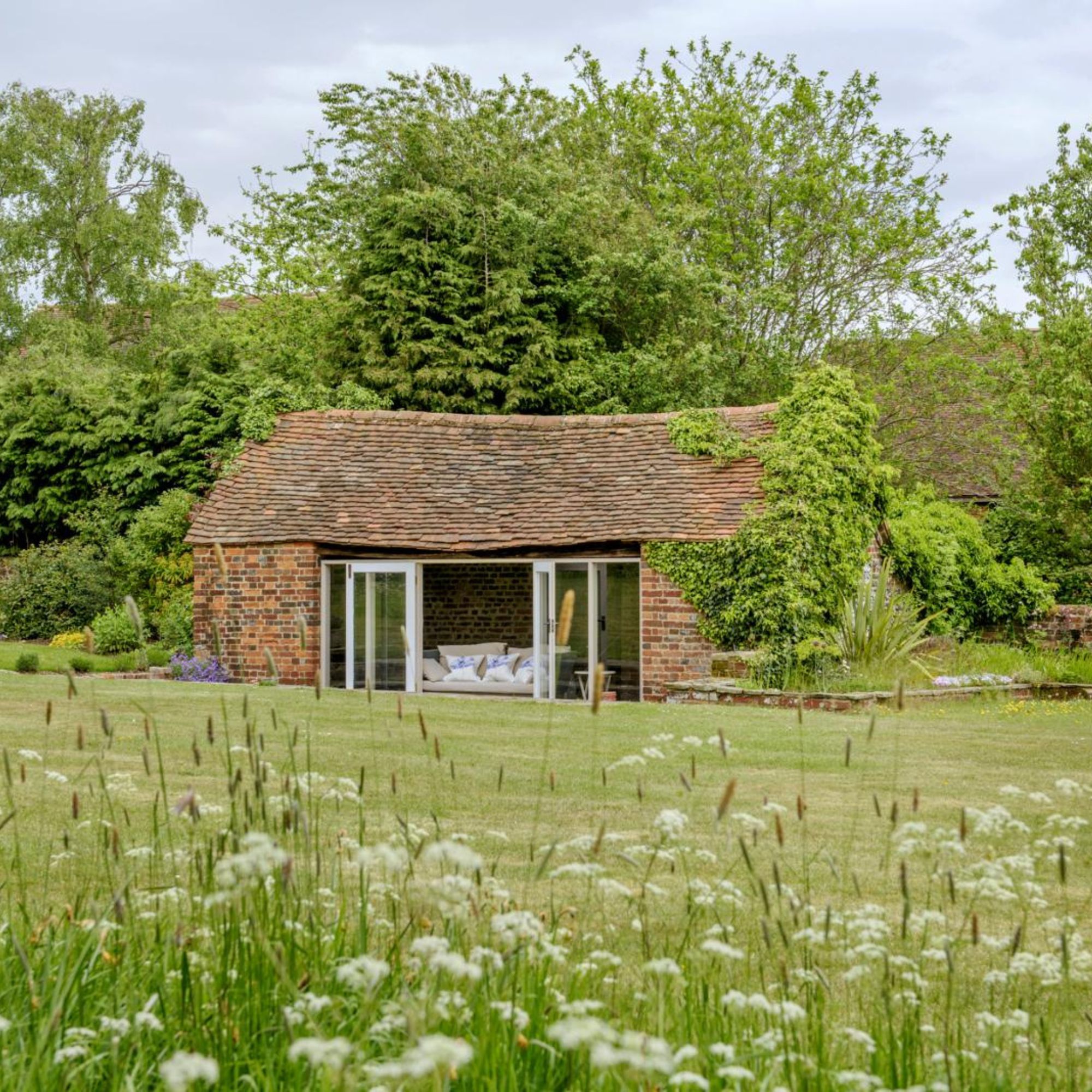
And just as it’s important to create a space for yourself and wildlife to flourish, special attention should be made towards ensuring native plants and grasses are encouraged.
'Instead of a lawn, opt for short, wild native grasses, with wild native herbs and clover to attract bees, butterflies, and dragonflies,' says Paula.
Sensory experience

According to Harriet, it’s important for a healing garden to include plenty of sensory garden ideas to stimulate all the senses, from sight and sound, to touch and smells.
'Visually it has to stimulate and a backdrop of green leaves and a changing tapestry of flowers throughout the year creates a sense of wonder and optimism.
'Sounds [like] the rustle of bamboo or Betula leaves, birds singing, [and] gently flowing water… are calming, and crucially might help to drown out or distract from an overhead flight path or rush hour traffic.
'Raised beds with plants whose leaves are soft and tactile can be another wonderful thing for those who might reach out and touch the plants, or brush past them.'
How to create your own healing garden
1. Go native
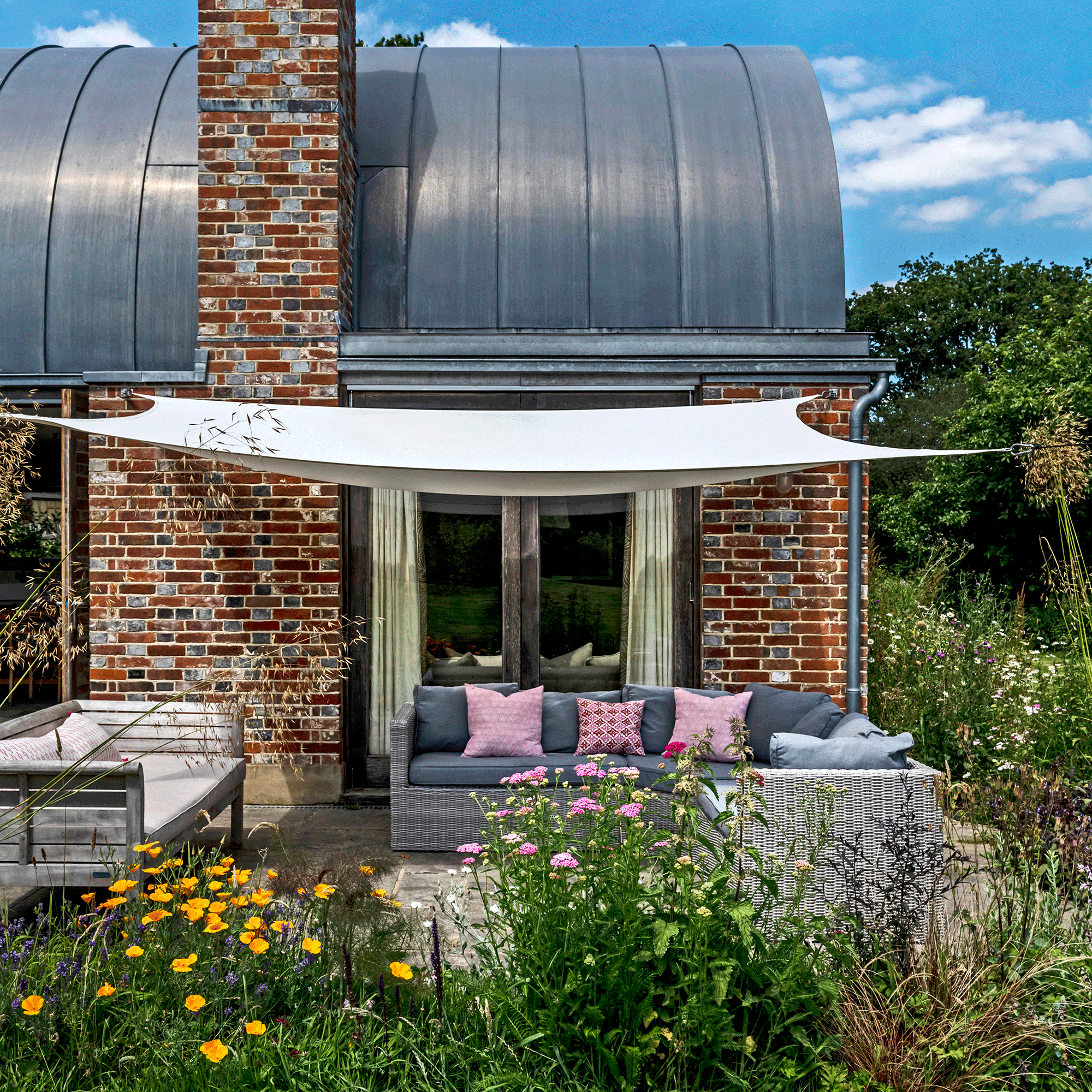
With its emphasis on letting nature work its magic, it’s no surprise to find rewilding plays a big part in creating your own healing garden. If you are going to bring plants from outside into your garden, Paula recommends doing your research and looking for plants that you would normally find in your neck of the woods anyway.
'Use a combination of books, plant identification apps and regional databases to identify plants that are native to your area,' says Paula. 'Avoid exotic, imported plants. Non-natives are often invasive, don’t support local insect and animal populations, and break down the native ecosystem.'
2. Avoid straight lines
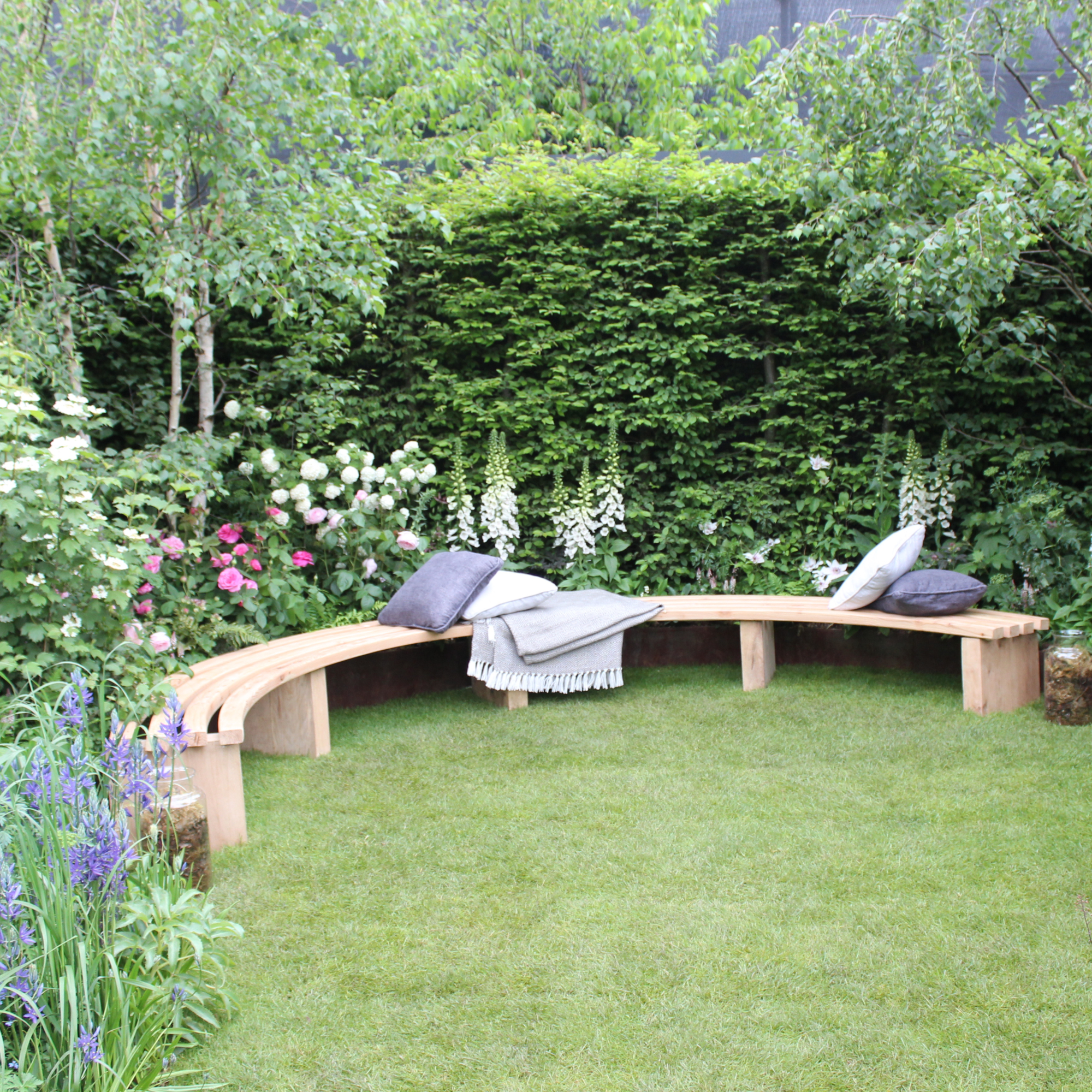
Nothing should be too strict or regimented in a healing garden, and you’ll want to minimise hard edges and straight lines. 'Curved lines are easier on the eye and dispel irritability,' says Paula.
Along with this it's a good ideas to keep hardscaping like a concrete path or brick wall to a minimum. Most gardens will involve some hardscaping, but according to Paula, if you’re creating a healing garden it’s important to keep it to a minimum. When you do try and use recycled and sustainable materials that help support the local wildlife.
3. Create meandering paths
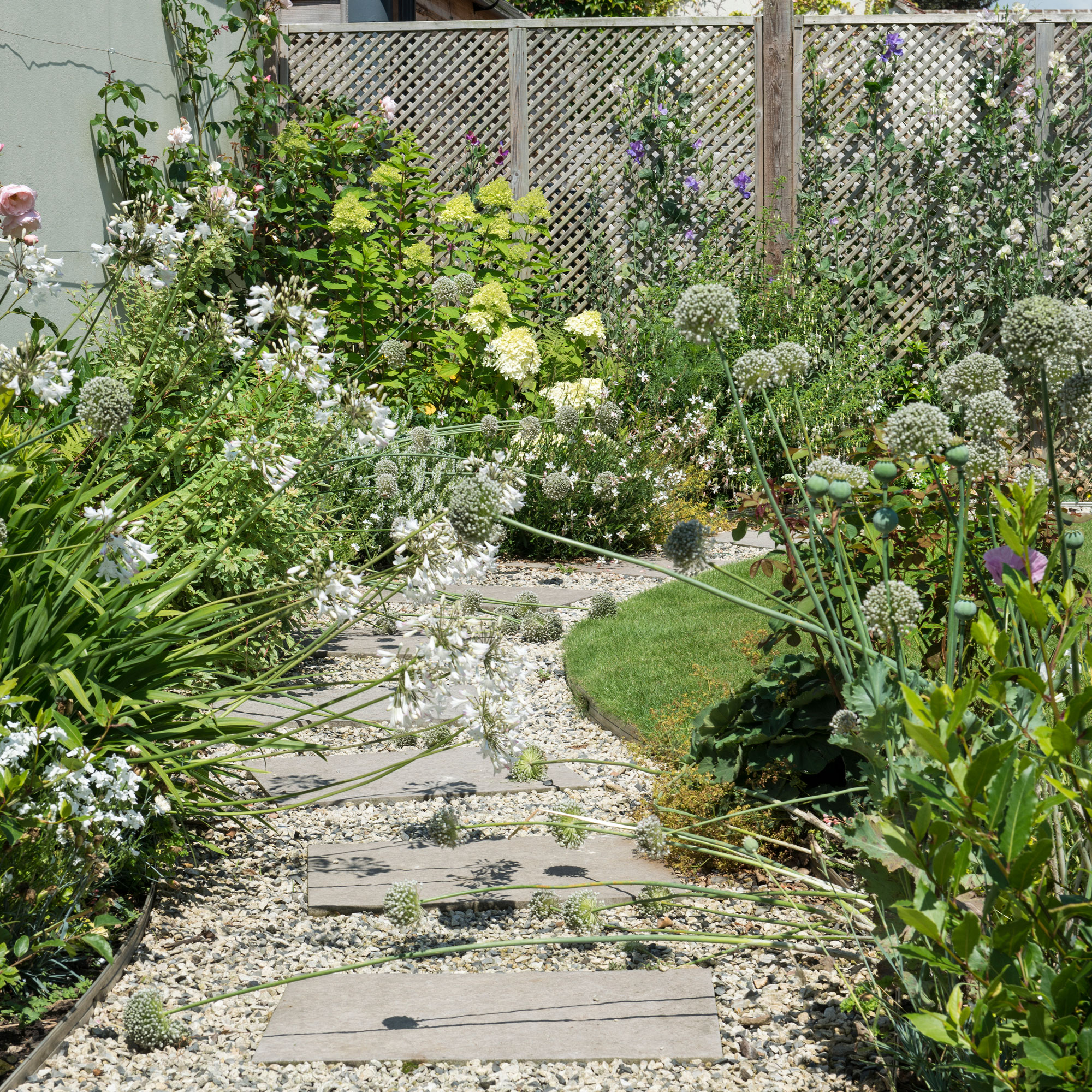
Garden path ideas are a must in a healing garden along with garden seating ideas. They are the places that will allow you to slow down and experience the garden you have created.
'Consider all the senses, and create meandering paths and lots of seating so that the garden layout forces you to stop, and walk slowly and appreciate the smell, the sound, the flowers and the atmosphere.'
4. Soften your lighting
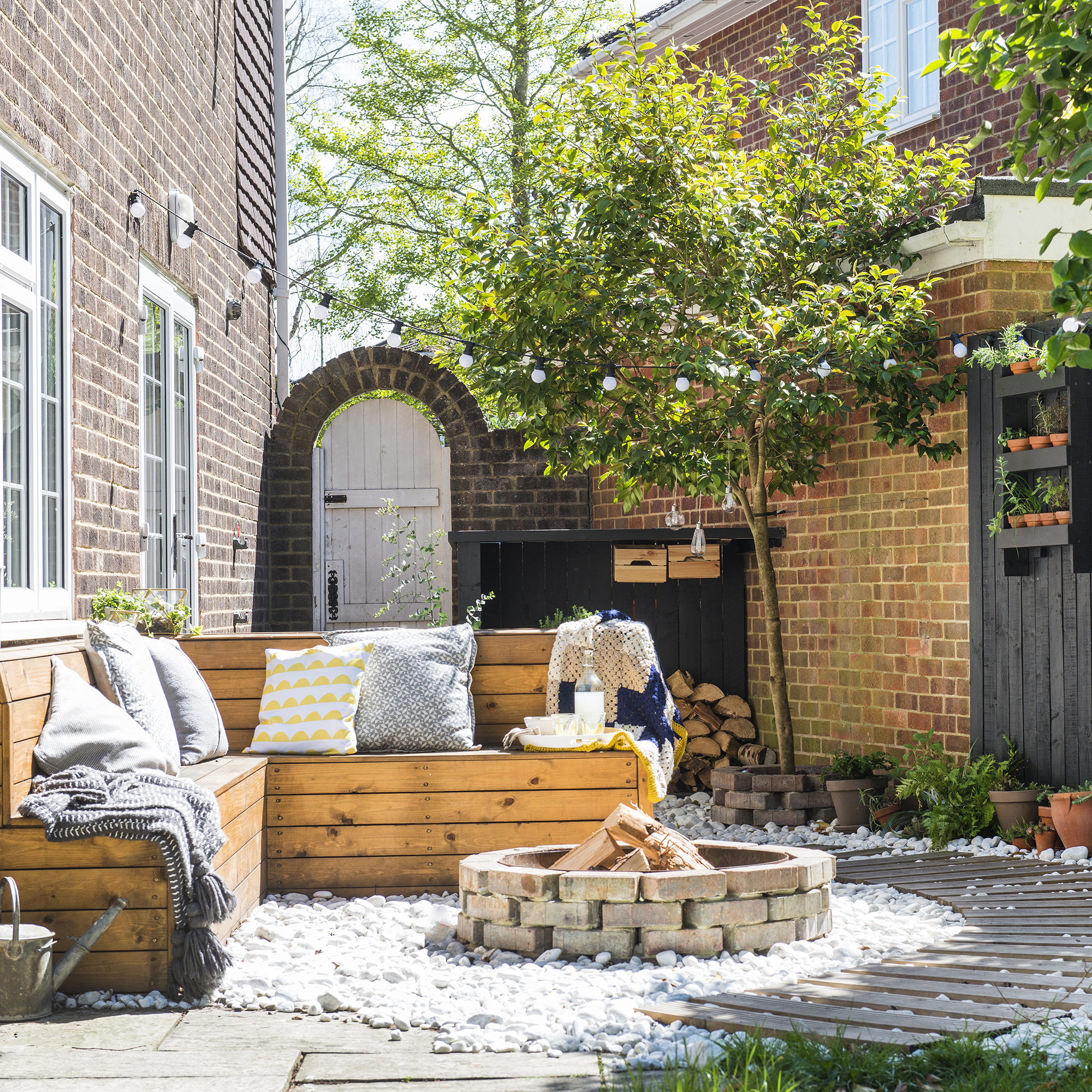
Just as in our bedrooms and homes, lighting can make a big difference and our mood. For example, Paula recommends having garden lighting which is red or amber in tone.
'Avoid blue and white LED lighting which disrupts our circadian rhythms and causes major issues to the ecosystem.'
6. Avoid pesticides
'For the sake of your health and the planet's, don't use pesticides,' warns Paula.
A 'pesticide' is something that prevents, destroys, or controls a harmful organism or disease, or protects plants or plant products. According to the WHO, 'pesticides are potentially toxic to humans and can have both acute and chronic health effects, depending on the quantity and ways in which a person is exposed.' Healing they most certainly are not.
FAQs
What does a healing garden do?
The term healing can often lead people to associate it with hospitals, hospices, or treatment centres. But 'anyone can benefit from healing elements in an outdoor space,' says Harriet. So really all a healing garden needs to do is bring a sense of calm. That is its number one job.
'Most people will feel uplifted by being in a calm garden, interacting with nature,' explains Harriet. 'Some of the most relaxing outdoor spaces I’ve ever been to have been in gardens surrounding monasteries and temples, in particular the Namgyal Monastery in Dharmasala and the monastery at Paleokastritsa in Corfu. It’s that atmosphere of calm that I would associate with a healing garden.'
What are the colours of a healing garden?
The colour we most associate with nature is green, and it should go without saying a healing garden must be rooted in the shade. Then it’s a case of embellishing that green with colours that compliment and calm.
'White on green can be very calm,' says Harriet, 'and white flowers can look fabulous at dusk. They almost glow as the daylight fades. Bright colours are uplifting and positive, and pastel colours look calm and romantic. There are no best colours, but the key is to stick to a colour scheme, without too many unthought-out clashes. Plan the colours in advance, so that they all work together.'
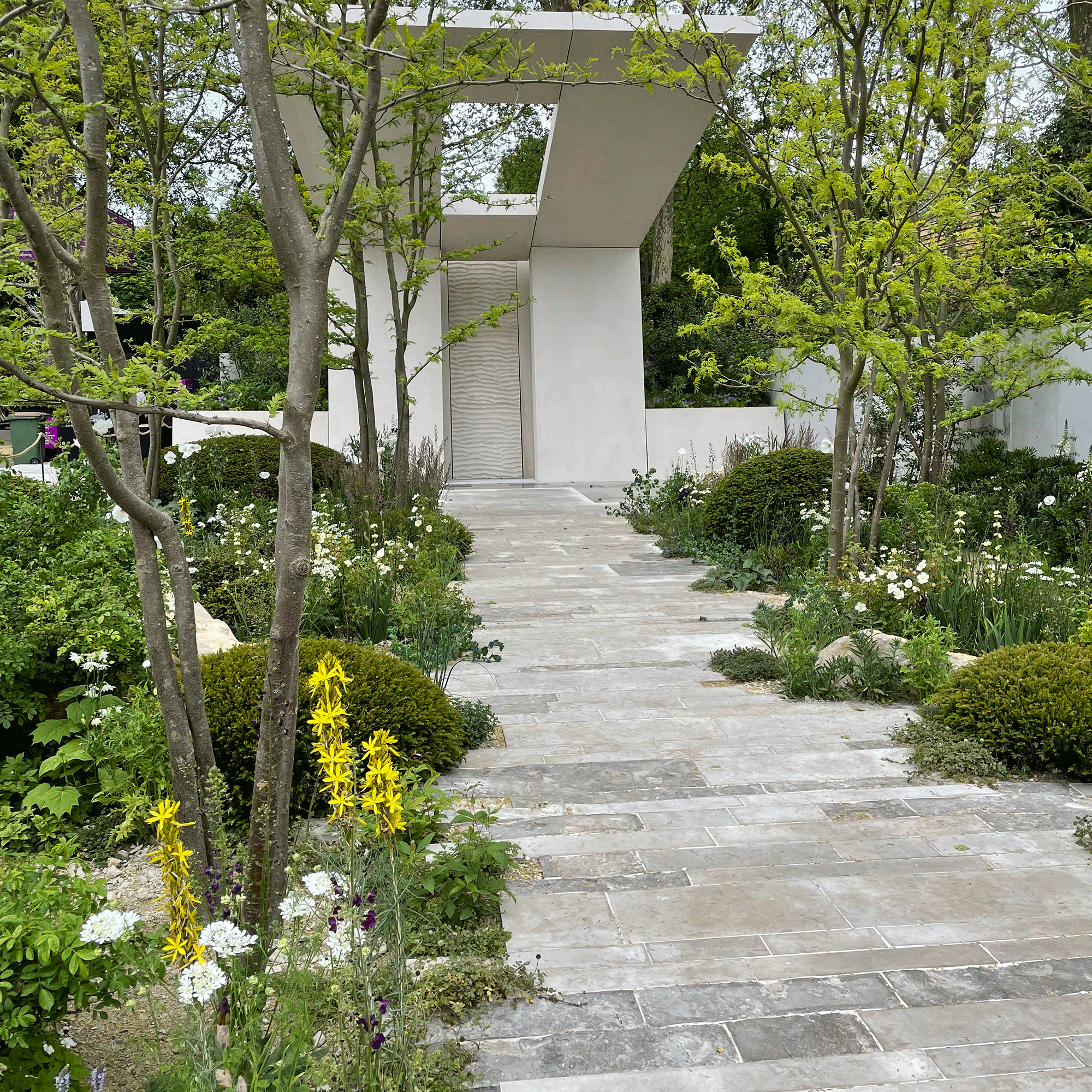
What are the best plants to include in a healing garden?
Natives are best, and anything that taps into the senses
'I would always include a mix of evergreens, so that the beds don’t look bare in the winter,' says Harriet. 'Grasses work well as they rustle and move in the wind, and add life in January and February before they get cut back.
'Something in flower for each season is crucial, and plants with striking scent like wisteria, jasmine, honeysuckle, I would [also] plant soft foliage near pathways, rather than anything with spikes or thorns.'
Above all, don’t overthink it. A healing garden isn’t doing its job if it’s bringing you extra stress. 'Follow your intuition to guide you to the plants that will be most healing for you,' says Paula.







